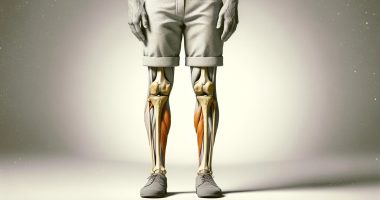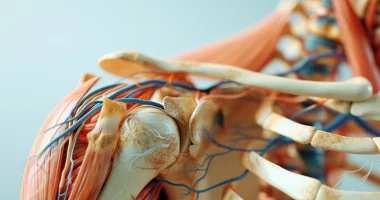Heart valve disease
Definition
Valvular (acquired) heart disease is a group of diseases (valve stenosis, insufficiency, combined defects) accompanied by a violation of the structure and function of the valve apparatus of the heart and leading to changes in the intracardiac circulation. Compensated heart defects can occur covertly, decompensated, manifested by shortness of breath, palpitations, fatigue, heart pain, and a tendency to faint. If conservative treatment is ineffective, surgery is performed. Dangerous with the development of heart failure, disability, and death.
General information
In heart defects, morphological changes in heart structures and blood vessels cause disturbances in cardiac function and hemodynamics. A distinction is made between congenital and acquired heart defects.
More than 50% of acquired heart defects are lesions of the bicuspid (mitral) valve and about 20% of the aortic valve. There are two types of atrial-ventricular valve defects – stenosis and insufficiency. Valve insufficiency occurs due to the expansion of the fibrous ring or changes in the structure of the valve leaflets themselves, resulting in their incomplete closure.
Classification
Acquired heart defects are classified according to the following characteristics:
- Etiology: rheumatic, due to infective endocarditis, atherosclerotic, etc.
- Localization of the affected valves and their number: isolated (with one valve affected), combined (with two or more valves affected); malformations of the aortic, mitral, tricuspid, and pulmonary trunk valves.
- Morphologic and functional lesions of the valve apparatus: atrioventricular stenosis, valve insufficiency, and their combination.
- The degree of severity of the malformation and cardiac hemodynamic disturbance: mild, moderate or severe hemodynamic impairment.
- State of general hemodynamics: compensated heart defects (without circulatory insufficiency), subcompensated (with transient decompensation caused by physical overload, fever, pregnancy, etc.), and decompensated (with developed circulatory insufficiency).
Mitral insufficiency
In mitral insufficiency, the bicuspid valve does not completely block the left atrial-ventricular orifice during left ventricular systole, resulting in regurgitation (backflow) of blood into the atrium. Mitral valve insufficiency can be relative, organic, and functional.
The mitral valve in relative insufficiency remains unchanged, but the orifice it covers is enlarged, so the leaflets do not entirely block it.
Rheumatic endocarditis plays a leading role in the development of organic insufficiency. It causes the development of connective tissue in the mitral valve leaflets and, subsequently, the shriveling and shortening of the leaflets and tendon filaments connected to them.
Patients in the compensated stage with minor or moderate mitral valve insufficiency have no complaints and do not differ outwardly from healthy people; BP and pulse are unchanged. In the decompensated stage, cyanosis, dyspnea, and palpitations appear as further – edema on the lower extremities, painful, enlarged liver, acrocyanosis, and swelling of neck veins.
Mitral stenosis
In mitral stenosis, the cause of left atrioventricular orifice damage is usually long-standing rheumatism; less frequently, the stenosis is congenital or develops due to infective endocarditis. Mitral stenosis is caused by the fusion of the valve leaflets, their thickening, thickening, and shortening of tendon chords.
In the compensation period, there are no complaints. With decompensation and the development of stasis in the small circle of blood circulation, coughing, hemoptysis, shortness of breath, palpitations, and interruptions, heart pain appears. With mitral stenosis, the pulse on the left and right arm may differ. Since significant hypertrophy of the left atrium causes compression of the subclavian artery, the filling of the left ventricle decreases, and consequently, the stroke volume decreases – the pulse on the left becomes a small filling.
Aortic insufficiency
Aortic insufficiency develops when the semilunar leaflets, which normally block the aortic orifice, are not fully closed. This results in blood flowing from the aorta back into the left ventricle in diastole. In 80% of patients, aortic valve insufficiency develops after rheumatism, much less frequently as a result of infectious endocarditis, atherosclerotic or syphilitic lesions of the aorta, or trauma.
The cause of the malformation determines the morphologic changes in the valve. In rheumatic lesions, inflammatory and sclerotic processes in the valve leaflets cause their shriveling and shortening.
Subjective sensations in aortic insufficiency may not manifest for a long time because this type of heart defect is compensated by increased work of the left ventricle. Over time, relative coronary insufficiency develops, manifested by sensations of tremors and pains (like angina pectoris) in the heart region. They are caused by acute myocardial hypertrophy and deterioration of blood filling of the coronary arteries at low pressure in the aorta during diastole.
Further weakening of the left ventricle’s contractile activity leads to stasis in the pulmonary circulation and the appearance of dyspnea, weakness, palpitations, etc. External examination reveals pallor of the skin and cyanosis caused by unsatisfactory blood filling of the arterial bed in diastole.
Aortic stenosis
Aortic stenosis prevents the expulsion of blood into the aorta during contractions of the left ventricle. This type of heart defect develops after rheumatism or septic endocarditis, atherosclerosis, or congenital anomaly. Aortic orifice stenosis is caused by the fusion of the leaflets of the semilunar aortic valve or scar deformation of the aortic orifice.
Signs of decompensation develop with a pronounced degree of aortic stenosis and insufficient blood ejection into the arterial system. Disturbance of blood supply to the myocardium leads to heart pain of angina pectoris type; reduction of blood supply to the brain – headaches, dizziness, fainting. Clinical manifestations are more pronounced with physical and emotional activity.
Tricuspid insufficiency
Organic and relative insufficiency of the right (tricuspid) atrioventricular valve may develop in tricuspid heart disease. The causes of organic insufficiency are rheumatism, septic endocarditis, and trauma accompanied by rupture of the papillary muscle of the tricuspid valve. Isolated tricuspid insufficiency is extremely rare, it is usually combined with other valvular heart defects.
In tricuspid valve insufficiency, pronounced congestion in the venous system of the great circulation circle causes edema and ascites, sensations of heaviness in the right subcostal area, and pain associated with hepatomegaly. The skin is livid, sometimes with a yellowish tint. Cervical and liver veins swell and pulse (positive venous pulse syndrome).
Diagnosis of acquired heart defects
In patients with suspected heart defects, doctors find out how they feel at rest and their tolerance to physical exertion, clarifying the rheumatic and other anamnesis leading to the formation of defects in the heart’s valve apparatus.
Physical methods can detect the presence of cyanosis, pulsation of peripheral veins, dyspnea, and edema.
ECG recording and daily ECG monitoring are performed to diagnose heart rhythm disturbances and signs of ischemia.
Echocardiography is used to diagnose the defect, the area of the atrioventricular orifice, the severity of regurgitation, the state and size of the valves, chords, pulmonary trunk pressure, and cardiac ejection fraction. More accurate data can be obtained by CT or MRI of the heart.
Of laboratory tests, the greatest diagnostic value in cardiac defects is rheumatoid tests, determination of sugar and cholesterol, and general clinical blood and urine tests. Such diagnostics are performed both during the initial examination of patients with suspected heart defects and in dispensary groups of patients with an established diagnosis.
Treatment of acquired heart defects
Conservative treatment of heart defects concerns the prevention of complications and recurrences of the primary disease (rheumatism, infective endocarditis, etc.), correction of rhythm disorders, and heart failure. All patients with identified heart defects need to consult a cardiac surgeon to determine the timing of timely surgical treatment.
In mitral stenosis, prosthetic valve replacement with a biological or mechanical prosthesis results in partial or complete elimination of the stenosis and severe hemodynamic disorders. In most cases of insufficiency, mitral valve repair is possible, preserving the native valve and eliminating the need for lifelong anticoagulant therapy.
Aortic valve replacement surgery is performed for aortic malformations, and transcatheter aortic valve implantation (TAVI), which allows valve replacement without opening the chest, using only a femoral puncture, has been actively developed in recent years.
All these treatment options are available in more than 690hospitals worldwide (https://doctor.global/results/diseases/heart-valve-disease). For example, Aortic valve replacement (AVR) can be performed in these countries at following approximate prices:
Turkey $12.0 K in 29 clinics
Israel $13.1 K – 51.0 K in 13 clinics
Germany $52.0 K in 28 clinics
China $55.0 K in 3 clinics
United States $143.9 K in 15 clinics.
Prognosis
Minor changes in the valve apparatus of the heart, not accompanied by myocardial damage, can remain in the compensation phase for a long time and do not affect the ability to work of the patient. The development of decompensation in heart defects and their further prognosis is determined by several factors: repeated rheumatic attacks, intoxication, infections, physical overload, and nervous overstrain in women – during pregnancy and childbirth. Progressive damage to the valve apparatus and heart muscle leads to the development of heart failure, acute decompensation leads to the death of the patient.
Prospects for work capacity in heart defects are individualized and determined by the amount of physical activity, the patient’s training, and his condition. In the absence of signs of decompensation, the ability to work may not be impaired; however, in the development of circulatory insufficiency, light work or cessation of work is indicated.
Prevention
Measures to prevent the development of acquired heart defects include preventing rheumatism and septic conditions. For this purpose, sanitation of infectious foci, hardening, and increasing the body’s fitness.
In order to prevent heart failure, patients with a formed heart defect are recommended to observe a rational mode of movement (walking, therapeutic exercises), a complete protein diet, and limit the intake of table salt.
To monitor the activity of the rheumatic process and compensation of cardiac activity in heart defects, dispensary observation by a cardiologist is necessary.


